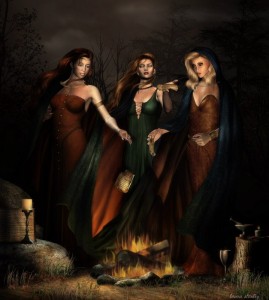Question
In this lesson I say that our capacity for understanding or making meaningfulness from the first stories is seriously limited for numerous reasons and I briefly offer two reasons why this is so: 1) the social process of the telling is disconnected from the story and this creates obvious problems for ascribing meaningfulness, and 2) the extended time of criminal prohibitions against Indigenous peoples telling stories combined with the act of taking all the children between 5 – 15 away from their families and communities. In Wickwire’s introduction to Living Stories, find a third reason why, according to Robinson, our abilities to make meaning from first stories and encounters is so seriously limited. To be complete, your answer should begin with a brief discussion on the two reasons I present and then proceed to introduce and explain your third reason from Wickwire’s introduction.
In this lesson Dr. Patterson outlines two definite reasons for our limited capacity to understand meaning from first stories: 1) the social process of the telling is disconnected from the story and this creates obvious problems for ascribing meaningfulness and 2) the extended time of criminal prohibitions against Indigenous peoples telling stories combined with the act of taking all the children between 5 – 15 away from their families and communities. This weeks blog post will be divided into 3 parts where I will briefly explain both reasons that Dr. Patterson has already mentioned and end with a discussion of a third reason presented by Wendy Wickwire in her introduction to Harry Robinsons “Living Stories”.
1.The Social Process
To quote Dr. Patterson’s lesson, “one [reason] is that in the acts of collecting, translating and publishing these stories, the social process of the telling is disconnected from the story and this creates obvious problems for ascribing meaningfulness – and there are always questions about who is collecting the stories and why, and these questions complicate the larger issues of translating or interpreting Indigenous stories using European symbolism and mythology” (Patterson). First stories are property of the original storyteller who created and told a personal story at a particular time and place that was important to them. The ideas and meanings behind the initial creation of the story are personal and only truly known to the original creator. When stories are gathered and retold, information is lost and/or twisted which changes the meaning of the story itself. If stories are being translated from other cultures and languages they lose aspects that translators and editors do not find relevant or important in the translated language. Every time a story is retold or reprinted, it loses its original meaning and authenticity creating an obvious problem for ascribing meaningfulness.
2. Prohibition Laws
Between 1880 and 1951, “the telling and retelling of stories at the potlatch, and other similar First Nations institutions across the country, were outlawed by the Indian Act and accordingly, the possibilities for storytelling were greatly diminished” (Patterson). Unfortunately, the Indian Act outlawed the telling the stories within First Nation institutions in Canada leaving there to be a large gap in history. Seven generations of First Nation peoples were unable to hear stories of their heritage by their parents or people in their community. They were completely cut off from being educated about their languages, rights and clan histories. Being that there was such an extremely large gap in time, many languages got lost and many important stories never got told. The colonial government’s intention behind this prohibition was to deliberately erase Indigenous cultural practices. However, First Nation culture was not erased and this prohibition only hindered and complicated the understanding of these stories.
3. Introduction of Anthropological Definitions
The third reason for our inability to ascribe meaningfulness to stories presented by Wendy Wickwire is because of the institution of anthropological definitions which diminishes the relevance of first stories. Wickwire presents ideas from academics Claude Levi-Strauss and Franz Boas to exemplify the way definitions have caused a detchment to meaning. Strauss identified first ftories with “cold zones” of consciousness and defined them as a “resistance to change… timeless and ahistorical” (Robinson 11). This example alone identifies indigenous stories as stories of the past and discounts their importance in todays society. Indigenous stories have therefore become representative of an obsolete culture that has no relevance or importance within the European culture. The introduction of anthropological definitions to first stories has created a disconnect with these stories and reality and they have been discounted to be mythological and representative of a culture that is not relevant anymore.
Works Cited:
Paterson, Erika. “Lesson 2.2.” ENGL 470A Canadian Studies: Canadian Literary Genres. University of British Columbia, 2013. Web. 18 Feb. 2016.
Robinson, Harry. Living by Stories: a Journey of Landscape and Memory. Compiled and edited by Wendy Wickwire. Vancouver: Talon Books 2005. Web. 18 Feb. 2016



